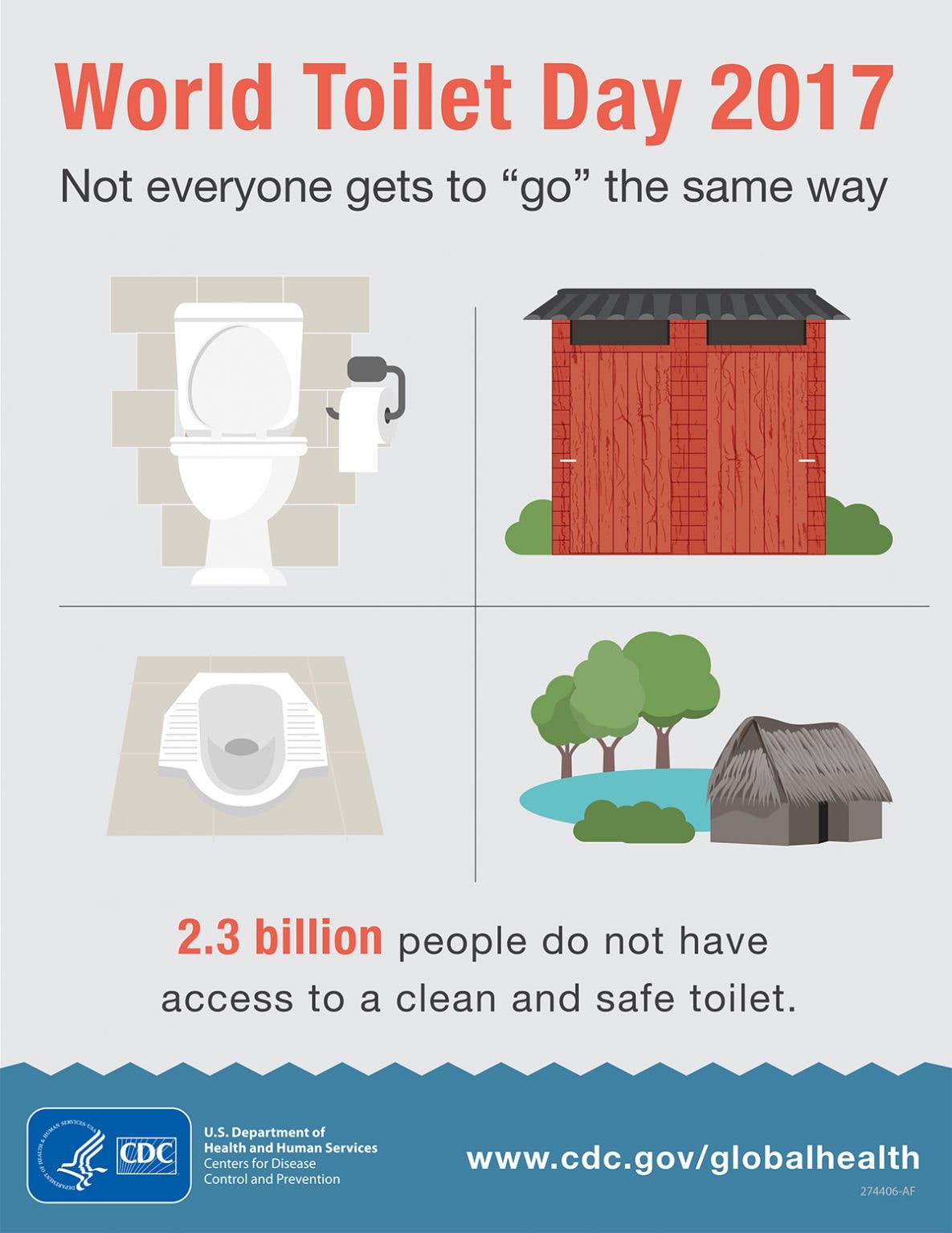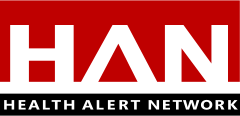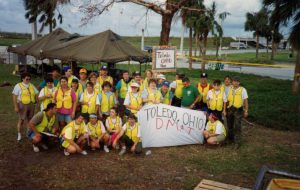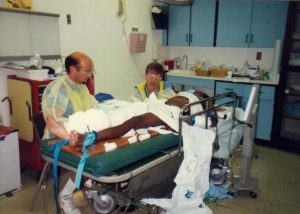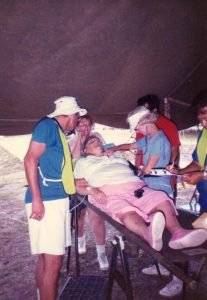Archive for the ‘Public Health’ Category
CDC recommendations to healthcare providers treating patients in Puerto Rico and USVI, as well as those treating patients in the continental US who recently traveled in hurricane-affected areas during the period of September 2017 – March 2018.
Wednesday, October 25th, 2017Advice for Providers Treating Patients in or Recently Returned from Hurricane-Affected Areas, Including Puerto Rico and US Virgin Islands
Distributed via the CDC Health Alert Network
October 24, 2017, 1330 ET (1:30 PM ET)
CDCHAN-00408
Summary
The Centers for Disease Control and Prevention (CDC) is working with federal, state, territorial, and local agencies and global health partners in response to recent hurricanes. CDC is aware of media reports and anecdotal accounts of various infectious diseases in hurricane-affected areas, including Puerto Rico and the US Virgin Islands (USVI). Because of compromised drinking water and decreased access to safe water, food, and shelter, the conditions for outbreaks of infectious diseases exist.
The purpose of this HAN advisory is to remind clinicians assessing patients currently in or recently returned from hurricane-affected areas to be vigilant in looking for certain infectious diseases, including leptospirosis, dengue, hepatitis A, typhoid fever, vibriosis, and influenza. Additionally, this Advisory provides guidance to state and territorial health departments on enhanced disease reporting.
Background
Hurricanes Irma and Maria made landfall in Puerto Rico and USVI in September 2017, causing widespread flooding and devastation. Natural hazards associated with the storms continue to affect many areas. Infectious disease outbreaks of diarrheal and respiratory illnesses can occur when access to safe water and sewage systems are disrupted and personal hygiene is difficult to maintain. Additionally, vector borne diseases can occur due to increased mosquito breeding in standing water; both Puerto Rico and USVI are at risk for outbreaks of dengue, Zika, and chikungunya.
Health care providers and public health practitioners should be aware that post-hurricane environmental conditions may pose an increased risk for the spread of infectious diseases among patients in or recently returned from hurricane-affected areas; including leptospirosis, dengue, hepatitis A, typhoid fever, vibriosis, and influenza. The period of heightened risk may last through March 2018, based on current predictions of full restoration of power and safe water systems in Puerto Rico and USVI.
In addition, providers in health care facilities that have experienced water damage or contaminated water systems should be aware of the potential for increased risk of infections in those facilities due to invasive fungi, nontuberculous Mycobacterium species, Legionella species, and other Gram-negative bacteria associated with water (e.g., Pseudomonas), especially among critically ill or immunocompromised patients.
Cholera has not occurred in Puerto Rico or USVI in many decades and is not expected to occur post-hurricane.
Recommendations
These recommendations apply to healthcare providers treating patients in Puerto Rico and USVI, as well as those treating patients in the continental US who recently traveled in hurricane-affected areas (e.g., within the past 4 weeks), during the period of September 2017 – March 2018.
- Health care providers and public health practitioners in hurricane-affected areas should look for community and healthcare-associated infectious diseases.
- Health care providers in the continental US are encouraged to ask patients about recent travel (e.g., within the past 4 weeks) to hurricane-affected areas.
- All healthcare providers should consider less common infectious disease etiologies in patients presenting with evidence of acute respiratory illness, gastroenteritis, renal or hepatic failure, wound infection, or other febrile illness. Some particularly important infectious diseases to consider include leptospirosis, dengue, hepatitis A, typhoid fever, vibriosis, and influenza.
- In the context of limited laboratory resources in hurricane-affected areas, health care providers should contact their territorial or state health department if they need assistance with ordering specific diagnostic tests.
- For certain conditions, such as leptospirosis, empiric therapy should be considered pending results of diagnostic tests— treatment for leptospirosis is most effective when initiated early in the disease process. Providers can contact their territorial or state health department or CDC for consultation.
- Local health care providers are strongly encouraged to report patients for whom there is a high level of suspicion for leptospirosis, dengue, hepatitis A, typhoid, and vibriosis to their local health authorities, while awaiting laboratory confirmation.
- Confirmed cases of leptospirosis, dengue, hepatitis A, typhoid fever, and vibriosis should be immediately reported to the territorial or state health department to facilitate public health investigation and, as appropriate, mitigate the risk of local transmission. While some of these conditions are not listed as reportable conditions in all states, they are conditions of public health importance and should be reported.
For More Information
- General health information about hurricanes and other tropical storms: https://www.cdc.gov/disasters/hurricanes/index.html
- Information about Hurricane Maria: https://www.cdc.gov/disasters/hurricanes/hurricane_maria.html
- Information for Travelers:
- Travel notice for Hurricanes Irma and Maria in the Caribbean: https://wwwnc.cdc.gov/travel/notices/alert/hurricane-irma-in-the-caribbean
- Health advice for travelers to Puerto Rico: https://wwwnc.cdc.gov/travel/destinations/traveler/none/puerto-rico?s_cid=ncezid-dgmq-travel-single-001
- Health advice for travelers to the U.S. Virgin Islands: https://wwwnc.cdc.gov/travel/destinations/traveler/none/usvirgin-islands?s_cid=ncezid-dgmq-travel-leftnav-traveler
- Resources from CDC Health Information for International Travel 2018 (the Yellow Book):
- Post-travel Evaluation: https://wwwnc.cdc.gov/travel/yellowbook/2018/post-travel-evaluation/general-approach-to-the-returned-traveler
- Information about infectious diseases after a disaster: https://www.cdc.gov/disasters/disease/infectious.html
- Dengue: https://www.cdc.gov/dengue/index.html
- Hepatitis A: https://www.cdc.gov/hepatitis/HAV/index.htm
- Leptospirosis: https://www.cdc.gov/leptospirosis/
- Typhoid fever: https://www.cdc.gov/typhoid-fever/index.html
- Vibriosis: https://www.cdc.gov/vibrio/index.html
- Information about other infectious diseases of concern:
- Conjunctivitis: https://www.cdc.gov/conjunctivitis/
- Influenza: https://www.cdc.gov/flu/index.htm
- Scabies: https://www.cdc.gov/parasites/scabies/index.html
- Tetanus and wound management: https://www.cdc.gov/disasters/emergwoundhcp.html
- Tetanus in Areas Affected by a Hurricane: Guidelines for Clinicians https://emergency.cdc.gov/coca/cocanow/2017/2017sept12.asp
NDMS: The nation’s medical tactical response team in times of disaster
Sunday, September 10th, 2017DMAT: Disaster Medical Assistance Team which is a fully functioning field hospital that can handle everything from minor injuries to bruises and broken bones. The team travels with a host of medical professionals and gear.
DMORT: Disaster Mortuary Operational Response Team which can handle mass-casualty situations. Once they set up, they handle the identification of remains by using scientific techniques as well as collecting information about the deceased from family members.
NVRT: National Veterinary Response Team is a team of veterinary professionals to care for both the working and victims animals in an affected area.
IRCT: Incident Response Coordination Team is deployed to keep track of and coordinate the multifaceted response.
IMSURT: International Medical Surgical Response Team essentially sends the operating room to the field — sort of a M.A.S.H. unit for disasters — to handle major trauma.
USPHS: U.S. Public Health Service will also send trained medical professionals to assist for one-stop manpower shopping.
In Ready or Not? Protecting the Public from Diseases, Disasters and Bioterrorism, 26 states and Washington, D.C. scored a six or lower on 10 key indicators of public health preparedness.
Thursday, April 13th, 2017Ready or Not? examines the nation’s ability to respond to public health emergencies, tracks progress and vulnerabilities, and includes a review of state and federal public health preparedness policies. Some key findings include:
- 26 states increased or maintained funding for public health from Fiscal Year (FY) 2014-2015 to FY 2015-2016.
- Just 10 states vaccinated at least half of their population (ages 6 months and older) against the seasonal flu during the 2015-2016 flu season (from July 2015 to May 2016).
- 45 states and Washington, D.C. increased the speed of DNA fingerprinting using pulsed-field gel electrophoresis (PFGE) testing for all reported cases of Shiga toxin-producing E. coli O157, a measure of a state’s ability to detect foodborne outbreaks.
- 10 states have a formal access program or a program in progress for getting private sector healthcare staff and supplies into restricted areas during a disaster.
- 30 states and Washington, D.C. met or exceeded the overall national average score (6.7) of the National Health Security Preparedness Index (as of 2016).
- 32 states and Washington, D.C. received a grade of C or above in States at Risk: America’s Preparedness Report Card, a national assessment of state-level preparedness for climate change-related threats – which have an impact on human health.
In addition, the report examined trends in public health preparedness over the last 15 years, finding successes and ongoing concerns.
- One-third of funds for health security and half of funds for healthcare system preparedness have been cut: Health emergency preparedness funding for states has been cut from $940 million in fiscal year (FY) 2002 to $660 million in FY 2016; and healthcare system preparedness funding for states has been cut by more than half since FY 2005 – down to $255 million.
- Some major areas of accomplishment: Improved emergency operations, communication and coordination; support for the Strategic National Stockpile and the ability to distribute medicines and vaccines during crises; major upgrades in public health labs and foodborne illness detection capabilities; and improvements in legal and liability protections during emergencies.
- Some major ongoing gaps: Lack of a coordinated, interoperable, near real-time biosurveillance system; insufficient support for research and development of new medicines, vaccines and medical equipment to keep pace with modern threats; gaps in the ability of the healthcare system to care for a mass influx of patients during a major outbreak or attack; and cuts to the public health workforce across states.
The Ready or Not? report provides a series of recommendations that address many of the major gaps in emergency health preparedness, including:
- Requiring strong, consistent baseline public health Foundational Capabilities in regions, states and communities-so that everyone is protected.
- Ensuring stable, sufficient health emergency preparedness funding to maintain a standing set of foundational capabilities alongside a complementary Public Health Emergency Fund which would provide immediate surge funding during an emergency.
- Improving federal leadership before, during and after disasters – including at the White House level.
- Recruiting and training a next generation public health workforce with expert scientific abilities to harness and use technological advances along with critical thinking and management skills to serve as the Chief Health Strategist for a community.
- Reconsidering health system preparedness for new threats and mass outbreaks by developingstronger coalitions and partnerships among providers, hospitals, insurance providers, pharmaceutical and health equipment businesses, emergency management, and public health agencies.
- Prioritizing efforts to address one of the most serious threats to human health by expanding efforts to stop Superbugs and antibiotic resistance.
- Improving rates of vaccinations for children and adults – which are one of the most effective public health tools against many infectious diseases.
Ready or Not? was released annually from 2003-2012, and more recently, TFAH has released Outbreaks: Protecting Americans from Infectious Diseases, from 2013-2015.The report was supported by a grant from the Robert Wood Johnson Foundation (RWJF).
Score Summary:
A full list of all of the indicators and scores and the full report are available on TFAH’s website. For the state-by-state scoring, states received one point for achieving an indicator or zero points if they did not achieve the indicator. Zero is the lowest possible overall score, 10 is the highest. The data for the indicators are from publicly available sources or were provided from public officials.
10 out of 10: Massachusetts
9 out of 10: North Carolina and Washington
8 out of 10: California, Connecticut, Iowa, New Jersey, Tennessee and Virginia
7 out of 10: Colorado, Delaware, Florida, Indiana, Maryland, Michigan, New Hampshire, New Mexico, New York, North Dakota, Oregon, Rhode Island, South Carolina, Utah and Wisconsin
6 out of 10: Arizona, Arkansas, District of Columbia, Georgia, Hawaii, Illinois, Kansas, Kentucky, Louisiana, Maine, Minnesota, Mississippi, Montana, Nebraska, Ohio, Pennsylvania, Texas and Vermont
5 out of 10: Alabama, Missouri, Oklahoma, South Dakota and West Virginia
4 out of 10 Nevada and Wyoming
3 out of 10: Alaska and Idaho
Trump & Deadly Disease
Saturday, March 25th, 2017- “…..President Trump’s budget would cut funding for the National Institutes of Health by 18 percent.
- It would cut the State Department and the United States Agency for International Development, a key vehicle for preventing and responding to outbreaks before they reach our shores, by 28 percent.
- And the repeal of the Affordable Care Act would kill the billion-dollar Prevention and Public Health Fund, which provides funding for the Centers for Disease Control and Prevention to fight outbreaks of infectious disease.
- (While the budget also calls for the creation of an emergency fund to respond to outbreaks, there is no indication that it would offset the other cuts, or where the money would come from.)
- We are already witnessing an outbreak of influenza in birds — the H7N9 strain, in China — that could be the source for the next human pandemic. Since October, over 500 people have been infected; more than 34 percent have died. Most victims had contact with infected poultry, yet three recent clusters appear to be from person-to-person transmission. Will H7N9 mutate to become easily transmitted between humans? We don’t know. But without sufficient supplies of a vaccine, we are not prepared to stop it…….”
OHIO: Six out of 10 on Key Indicators Related to Preventing, Detecting, Diagnosing and Responding to Outbreaks
Sunday, March 19th, 2017Ready or Not? examines the nation’s ability to respond to public health emergencies, tracks progress and vulnerabilities, and includes a review of state and federal public health preparedness policies. Some key Ohio findings include:
| No. | Indicator | Ohio | Number of States Receiving Points |
|---|---|---|---|
| A “Y” means the state received a point for that indicator | |||
| 1 | Public Health Funding Commitment: State increased or maintained funding for public health from FY 2014 to FY 2015 and FY 2015 to FY 2016. |
Y | 26 |
| 2 | National Health Security Preparedness Index: State met or exceeded the overall national average score (6.7) of the National Health Security Preparedness IndexTM, as of 2016. | 30 + D.C. | |
| 3 | Public Health Accreditation: State had at least one accredited public health department. | Y | 43 + D.C. |
| 4 | Flu Vaccination Rate: State vaccinated at least half of their population (ages 6 months and older) for the seasonal flu from Fall 2015 to Spring 2016. | 10 | |
| 5 | Climate Change Readiness: State received a grade of C or above in States at Risk: America’s Preparedness Report Card. | 32 + D.C. | |
| 6 | Food Safety: State increased the speed of DNA fingerprinting using pulsed-field gel electrophoresis (PFGE) testing for all reported cases of E. coli. | Y | 45 + D.C. |
| 7 | Reducing Healthcare-Associated Infections (HAIs): State implemented all four recommended activities to build capacity for HAI prevention. | Y | 35 + D.C. |
| 8 | Public Health Laboratories: State public health laboratory provided biosafety training and/or provided information about biosafety training courses for sentinel clinical labs (from July 1, 2015 to June 30, 2016). | 44 | |
| 9 | Public Health Laboratories: State public health laboratories reported having a biosafety professional on staff (from July 1, 2015 to June 30, 2016). | Y | 47 + D.C. |
| 10 | Emergency Healthcare Access: State has a formal access program or a program in progress for getting private sector healthcare staff and supplies into restricted areas during a disaster. | Y | 10 |
| Total | 6 | ||
These 100 objects have made their mark on public health.
Friday, January 27th, 2017A list of 100 objects to recognize the Centennial of the Johns Hopkins Bloomberg School of Public Health — and to help us appreciate the vast reach of public health.
9/11 & disaster-related adverse birth outcomes.
Sunday, August 28th, 2016Carey B. Maslow, Kimberly Caramanica, Jiehui Li, Steven D. Stellman, and Robert M. Brackbill. (2016). Reproductive Outcomes Following Maternal Exposure to the Events of September 11, 2001, at the World Trade Center, in New York City. American Journal of Public Health. e-View Ahead of Print.
Objectives. To estimate associations between exposure to the events of September 11, 2001, (9/11) and low birth weight (LBW), preterm delivery (PD), and small size for gestational age (SGA).
Methods. We matched birth certificates filed in New York City for singleton births between 9/11 and the end of 2010 to 9/11-related exposure data provided by mothers who were World Trade Center Health Registry enrollees. Generalized estimating equations estimated associations between exposures and LBW, PD, and SGA.
Results. Among 3360 births, 5.8% were LBW, 6.5% were PD, and 9% were SGA. Having incurred at least 2 of 4 exposures, having performed rescue or recovery work, and probable 9/11-related posttraumatic stress disorder 2 to 3 years after 9/11 were associated with PD and LBW during the early study period.
Conclusions. Disasters on the magnitude of 9/11 may exert effects on reproductive outcomes for several years. Women who are pregnant during and after a disaster should be closely monitored for physical and psychological sequelae.
Public Health Implications. In utero and maternal disaster exposure may affect birth outcomes. Researchers studying effects of individual disasters should identify commonalities that may inform postdisaster responses to minimize disaster-related adverse birth outcomes.
Read More: http://ajph.aphapublications.org/doi/abs/10.2105/AJPH.2016.303303
Pictograms designed to promote universal access to emergency dispensing sites services
Monday, August 8th, 2016Pictogram-based Signs for Mass Prophylaxis Services
In 2007, the Cambridge Advanced Practice Center for Emergency Preparedness developed a series of pictograms designed to promote universal access to emergency dispensing sites services. The signs were developed in collaboration with local and state public health professionals, and experts in universal design and accessibility.
These signs provide:
- Large, high contrast pictograms of station activities. Select from up to 10 station signs!
- Simple, one-word descriptions in English and Spanish. Available in 13 other languages!
- Four-step process sign
- All-hazards approach to allow versatility and scalability
To obtain high resolution PDFs of the signs or for more information, please email apc@naccho.org.

Process Sign









Signs for PODs, Medication and Health Care Centers
Sunday, August 7th, 2016Signs for Medication and Health Care Centers
Below is a complete list of signs you can use in health care and medication centers. Advice about ways to use the signs can be found on the page about planning these emergency centers. The signs may be available in multiple languages, different formats. You will be able to customize the signs for your jurisdiction or facility.
The file may be presented in one or both of two formats:
- Adobe InDesign format: High-quality files for printing larger signs through your local print-shop or customizing the signs for your location.
- PDF format: For printing to smaller format printers or plotters.
If you have questions or need help, write to signs@doh.wa.gov
Medication Center/Health Care Center Signs
| Moving through the centers |
Arrows
Waiting area; Please wait; Wait for staff Authorized personnel only |
Medical evaluation
At the Health Care Center
|
| Entering and exiting | Entrance/No entrance | Thank you for your cooperation |
| Assistance and internal operations |
Prohibited Items | Operations |
| Interpretation and special needs |
Interpretation Tools | |
| Clinical setting | Medical evaluation/First aid | Number and letter signs |
| Logistics | Deliveries | Arrows |
| Other signs | Emergency Preparedness Drill sign and banner |


